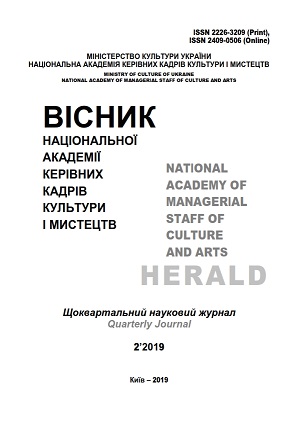Differentiation of Computer-Aided Form-Making Interpretations in the Architectural Design of Postmodernism
Differentiation of Computer-Aided Form-Making Interpretations in the Architectural Design of Postmodernism
Author(s): Igor Savich BondarSubject(s): Architecture, Aesthetics, Social Informatics
Published by: Національна академія керівних кадрів культури і мистецтв
Keywords: hypersurface; computer-aided form-making; architectural design; postmodernism;
Summary/Abstract: The purpose of the article is to specify the differentiated concepts of computer-aided form-making in the architectural design of postmodernism. Methodology. Within the frame of the tasks set the analysis and synthesis of scientific achievements of well-known scientists and world-renowned designers in architecture were conducted, methods of generalization and systematization of the research subject were used. Scientific novelty. A detailed explanation of computer-aided form-making in the architectural design of postmodernism is for the first time presented in this work. The notion of "hypersurface" is specified and extended. The role and place of the computer which is transformed into an element of the paradigmatic and synergetic reality by means of which the transfer of intelligence occurs are determined. Conclusions. As a result of the differentiation and analysis of the concepts of computer-aided form-making, applied in the architectural design of postmodernism, the following assumptions can be made: 1) the hypersurface is created as a space that does not divide, but rather encompasses, at the same time there is unification of the avant-garde and the ordinary system in the general human culture; 2) the computer originally being the proper factor of the design process as an exteriorly defined instrument of interpretation becomes a computer reality and acquires characteristics of paradigmatic and synergetic reality; 3) automation of thought takes place, with computers becoming its symbol; moreover, the transfer of intelligence to the systems occurs, and this is a question of the culture of creativity. It is impossible to get rid of it, but an architect or a designer still remains the creator and original source.
Journal: Вісник Національної академії керівних кадрів культури і мистецтв
- Issue Year: 2019
- Issue No: 2
- Page Range: 453-458
- Page Count: 6
- Language: English

